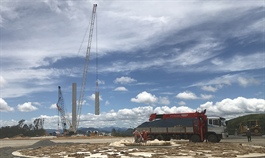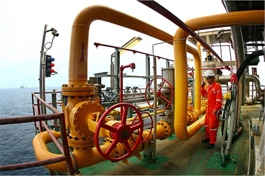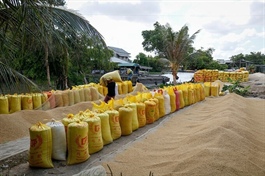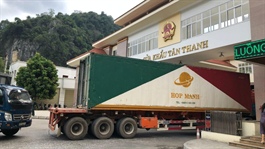Pandemic spells trouble for Viet Nam exporters to Europe
Pandemic spells trouble for Viet Nam exporters to Europe
While demand for imported agricultural produce is high in Europe, the ongoing pandemic is causing problems for exporters in Viet Nam and throughout Asia, leading to a possible disruption in supply.

Industry experts say the biggest problem in the industry is no longer a lack of available containers and higher freight rates at sea, but the congestion of goods due to the pandemic.
At the end of last year, Vietnamese businesses accelerated the export of goods, but a series of orders had to be stored and renegotiated due to the lack of empty containers and the sudden increase in freight rates.
According to data, sea freight rates for export goods through the European and American markets have recently increased by seven to ten times.
Sai Gon Securities research on the logistics industry shows that the congestion and disruption of the world logistics system will see freight rates peak in the fourth quarter of 2021, and only slightly decrease in the first half of 2022 and not record a significant decrease until 2023.
The research said 90 per cent of Viet Nam's export goods depended on foreign shipping lines. Vietnamese business owners cannot influence the price of international transport chains but still suffer from the high rates.
However, rising sea freight rates are no longer the major problem compared to the risk of a possible disruption in supply of agricultural produce from Asia to Europe.
Director of LTP Import Export BV Company from the Netherlands, Pham Van Hien told local media: "My company ordered a lot more than before to supply the increasing demand.”
Hien said that 50 per cent of his firm’s imports were from Viet Nam and he planned to increase this.
“The most important thing is to have goods in time to supply the market at the end of the year," he said.
Hien said in Europe, prices of Asian agricultural commodities were rising, adding that if the transport supply chain was broken, prices for the products would rise even higher. Therefore, importers in Europe must increase the number of goods in stock as much as possible.
Last week, the Viet Nam Trade Promotion Agency (Vietrade) and the Vietnamese Trade Office in the Netherlands organised a virtual consultation on the export of agro-aquatic products to the European market, mentioning key products from Viet Nam including fresh and processed fruit, mushrooms, cashews and shrimp.
Vo Thi Ngoc Diep, Vietnamese Trade Counsellor in the Netherlands, said the European market was willing to import those meeting requirements, and local demand, adding that since August 2020, Viet Nam and the EU had implemented a free trade agreement offering many tax incentives and opportunities for Vietnamese exporters.
Currently, Vietnamese items being affected the most are mainly dry goods such as pho, vermicelli as well as some frozen food, Hien said.
According to Vietrade, the stock of Asian products in European stores was enough to meet demand for the next three months, but if the supply from Asia is not restored within two months, it will be a big problem.
Therefore, importers and agricultural shops in Europe hope the pandemic in Asia will soon be controlled so that they could have enough goods for the busiest shopping time of the year.
The Ministry of Agriculture and Rural Development said Viet Nam’s export of agricultural and aquatic products in the first seven months of 2021 to markets in Asia accounted for 42 per cent of market share, while the share for the Americas was 31 per cent, Europe 11 per cent, Africa 1.9 per cent and Oceania 1.5 per cent.


























